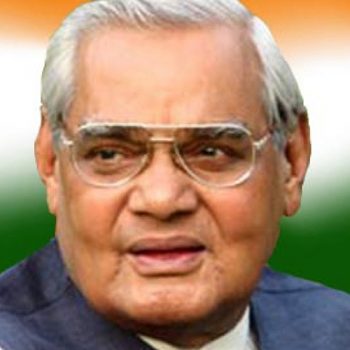The Economic Legacy of Atal Vajpayee: A Solid Foundation for Growth
The boy from rural Gwalior had given up studying Law during the turmoil of the Partition Riots, but Law’s loss proved to be India’s’ gain because Jawaharlal Nehru quickly spotted something special after listening to his maiden speech in Parliament House a dozen or so years later: “This young man will be our Prime Minister one day”. And of course Nehru was right, because that boy from Gwalior was Atal Bihari Vajpayee, who died last week at the grand old age of 94. History has rarely given one man an opportunity to shape the economic future of a nation, but the modern Indian economy was to take root under Vajpayee’s three periods in office. The fact that India is now an economic super power owes a great deal to his foresight.
Vajpayee became Prime Minister in 1998, immediately after the seminal administration of Narasimha Rao, which had taken the first faltering steps towards opening India up to the new global economy. After decades of Central Government stasis and only six years of economic reform, small wonder that most of the subcontinent’s business community were initially sceptical about Vajpayee’s ability or appetite to continue to roll out the Rao inspired anti-protectionist and anti centralisation initiatives. Not least because the Mandarins running the BJP’s parent body, his own party were pretty much protectionist and statist to a man (and they were all men).
But Vajpayee had never been a subscriber to Protectionist Politics, and he defied all expectations by not only continuing with the Rao agenda but expanding it with all the enthusiasm of…well, with all the enthusiasm of a politician used to getting his own way despite established party orthodoxy. Think Margaret Thatcher in a dhoti.
Vajpayee laid radical foundations for modern and deregulated Insurance and Banking sectors in India and for increased foreign investment in India’s real estate markets. He had also removed all quantitative restrictions on imports by 2002, replacing them with a framework of domestic tariffs referable in particular to the all important agricultural sector (Brexit minded politicians in the United Kingdom care to might take note). In a few short years his Administration had also radically extended capital markets and significantly reduced the State’s involvement in public sector banks. But most of all, perhaps more than any of his other contributions to India’s economic resurgence Vajpayee totally revolutionised the subcontinent’s Telecoms Sector in ways that we are still coming to terms with today.
In short…no Vajpayee, no Flipkart.
Vajpayee set up a National Task Force on Information Technology and had the foresight to bring onto it pioneering entrepreneurs including N.R. Narayan Murthy (now of Infosys) and Azim Premij (now Wipro): people, in short, who actually knew what they were doing. How’s that for revolutionary? And the result was the New Telecom Policy of 1999, which introduced new licensing protocols making it easier and more attractive for private interest groups to enter the market, at the same time deliberately backing the State away from crucial decisionmaking. Can you imagine that ever happening on the subcontinent before 1991?
And from the perspective of 2018 we can now see the true scale of these changes. In 1991 only a little over 2% of India’s population had access to telecoms technology, that figure is now over 90%. The fastest growing large economy on the planet also has one of the most fluid and innovative technology markets anywhere in the world, driven by an increasingly urbanised and youthful population that views the mobile phone and the tablet as their shopping instruments of choice. They have Bill Vajpayee to thank for that.
One way or another, it was certainly all a very long journey from Gwalior.
Nobody understands India’s potential for growth better than Red Ribbon Asset Management, which has placed the subcontinent at the heart of its investment strategies since the company was founded more than a decade ago. With an unrivalled knowledge of local market conditions, the Red Ribbon Indian Equities Fund offers a unique opportunity to share in that potential.
[nectar_btn size="large" open_new_tab="true" button_style="regular" button_color_2="Accent-Color" icon_family="none" url="https://redribbon.co/investment-products/funds/private-equity-fund/" text="Indian Equities Fund"][nectar_btn size="large" open_new_tab="true" button_style="regular" button_color_2="Accent-Color" icon_family="none" url="https://redribbon.co/investment-products/" text="Investment Products"]
Red Ribbon CEO, Suchit Punnose said:
I have often thought that an economy opens out fully over a thirty year cycle, beginning with the removal of barriers to trade and expansion of domestic markets from central government control; moving into a second ten year period of market adjustment and recalibration as those changes take root, and then into a third decade of explosive growth. We saw that happen in Russia and in China and now we are seeing it happen in India: we are now living through this third decade of explosive growth on the subcontinent which has seen it become the fastest growing large economy on the planet.
But we should never forget the importance of those first two decades, laying a solid foundation for what comes after is a key part of the process, and neither should we forget that in India’s case the guiding hand for most of this period was the hand of AB Vajpayee. We have a lot to be grateful to him for.
[social_buttons full_width_icons="true" facebook="true" twitter="true" google_plus="true" linkedin="true" pinterest="true"]








Leave a Reply